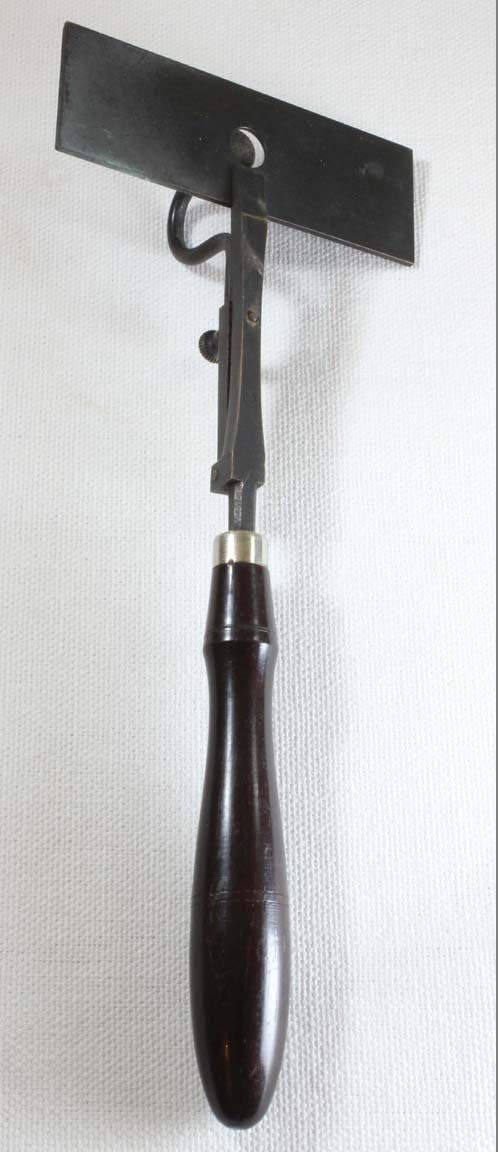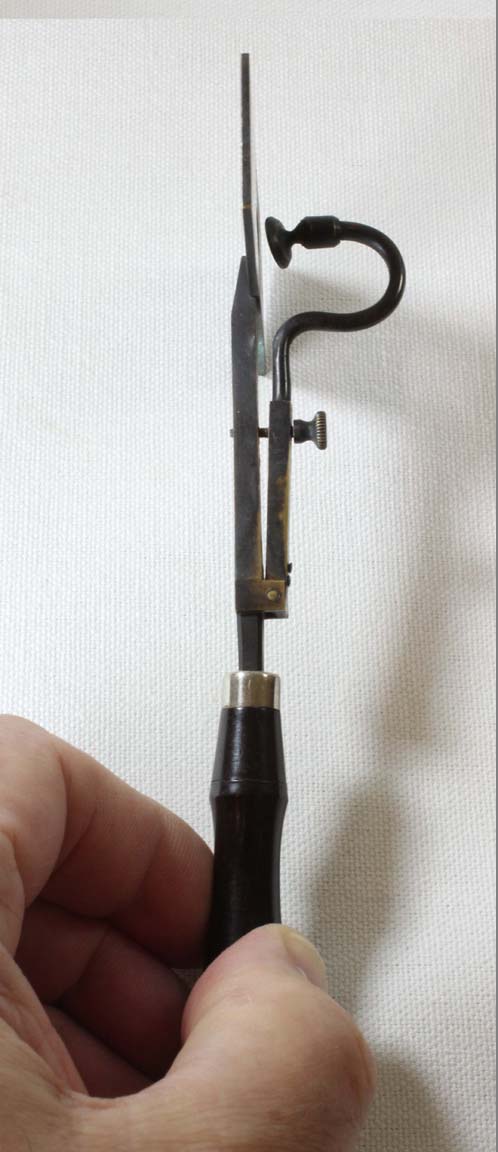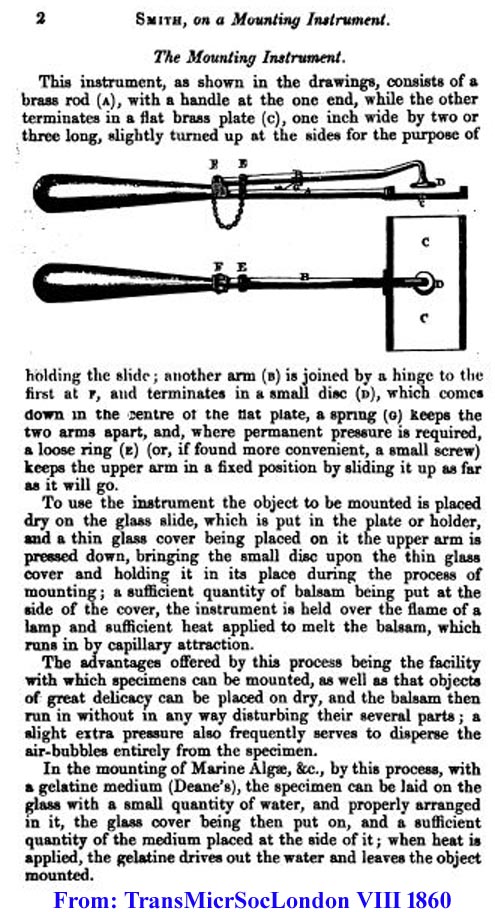SMITH'S MOUNTING INSTRUMENT




| DESCRIPTION | USAGE | HISTORY |
It consists 'of a plate of brass turned up at its edges, of the proper size to allow the ordinary glass slide to lie loosely in the bed thus formed ; this plate has a large perforation in its centre, in order to allow heat to be directly applied to the slide from beneath ; and it is attached by a stout wire to a handle. Close to this handle there is attached by a joint a second wire, which lies nearly parallel to the first, but makes a downward turn just above the centre of the slide-plate, and is terminated by an ivory knob ; this wire is pressed upwards by a spring beneath it, whilst, on the other hand, it is made to approximate the other by a milled-head turning on a screw, so as to bring its ivory knob to bear with greater or less force on the covering glass.'
 The use of this instrument is best described by the inventor, James Smith himself, as documented in the original description, pictured to the right. Click on the image for a larger version.
The use of this instrument is best described by the inventor, James Smith himself, as documented in the original description, pictured to the right. Click on the image for a larger version.
 This instrument was invented by James Smith, the founder of his own company, then Smith and Beck, later to be R. & J. Beck. The instrument was noticed in the Transactions of the Microscopical Society of London, Volume VIII, 1860, reported as being read to the Society on June 29, 1859; this report is shown to the right. Its original form is shown in the illustration from The Transactions. The original form had a simple ring sliding to adjust the tension, but subsequently a more precisely adjustable screw mechanism was added and this is the form most commonly seen today, and also shown in illustrations from Carpenter's The Microscope and its Revelations (including the 6th Edition of 1881), as well as the Beck catalogs of 1882 and 1888(shown to the left). Another change was to eliminate the turned up edges so that an oversized-slide could be used. As is illustrated by all these entries, this instrument must have been quite popular. It was sometimes supplied with slide-making kits and also as a stand alone item. In 1882 it cost $3.50 from Beck's American catalog.
This instrument was invented by James Smith, the founder of his own company, then Smith and Beck, later to be R. & J. Beck. The instrument was noticed in the Transactions of the Microscopical Society of London, Volume VIII, 1860, reported as being read to the Society on June 29, 1859; this report is shown to the right. Its original form is shown in the illustration from The Transactions. The original form had a simple ring sliding to adjust the tension, but subsequently a more precisely adjustable screw mechanism was added and this is the form most commonly seen today, and also shown in illustrations from Carpenter's The Microscope and its Revelations (including the 6th Edition of 1881), as well as the Beck catalogs of 1882 and 1888(shown to the left). Another change was to eliminate the turned up edges so that an oversized-slide could be used. As is illustrated by all these entries, this instrument must have been quite popular. It was sometimes supplied with slide-making kits and also as a stand alone item. In 1882 it cost $3.50 from Beck's American catalog.